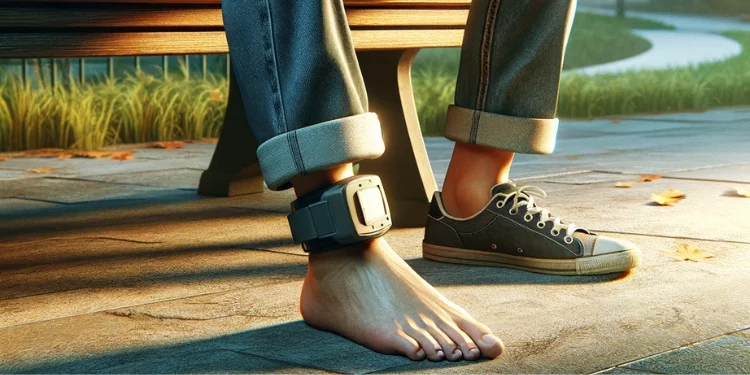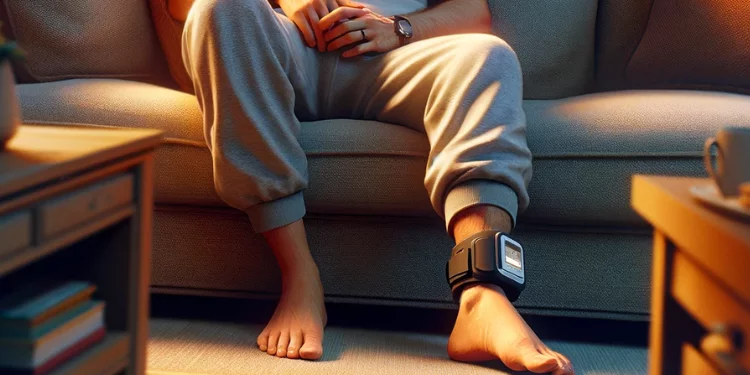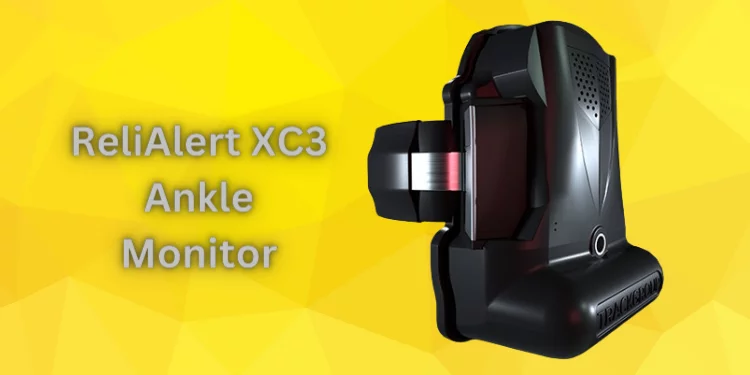How Do Ankle Monitors Work? [Technology Behind It 2025]
Electronic ankle monitors, or GPS ankle bracelets, are advanced devices used in many legal and police situations. Instead of traditional jails, ankle monitors allow authorities to watch prisoners while allowing them some freedom. Learn how do Ankle Monitors work, their uses, and the technology behind them. Explore ankle monitor rules, accuracy, and limitations.
Why Ankle Monitors?

To avoid jail, ankle trackers are used to keep track of people who follow certain legal restrictions, and they are made to keep track of their whereabouts and actions.
These devices allow authorities to monitor offenders without imprisoning them, supporting rehabilitation and reintegration.
How Do Ankle Monitors Work?
Ankle monitors are complex devices, so it’s important to understand the technology behind them.
GPS Tracking
Every ankle monitor has a GPS receiver. This receiver works with satellites to locate the wearer on Earth. Authorities can trace the wearer in real-time with this technology.
Location Data Transmission
The ankle monitor sends GPS data through a secure network to a central monitoring system. This flow lets law enforcement and prison agencies get real-time wearer location data.
Customized Alert System
The ankle monitors come with a specialized alert system that can be adjusted. This system can send notifications under certain scenarios.
It can notify the wearer when they leave a preset area, enter banned zones, or break curfew. This customized alerting feature enhances security and enforcement.
Voice Communication
Advanced ankle monitors have two-way or three-way voice communication. This function allows wearers to communicate with monitoring authorities directly. It can be used for many things, like regular check-ins, giving directions, and handling emergencies.
Applications of Ankle Monitors

Ankle monitors have multiple uses in the legal and law enforcement fields, each with its unique function.
House Arrest and Location Monitoring
Home arrest is a major use of ankle monitors. Offenders can serve their time in the privacy of their own homes while being closely monitored. Ankle monitors let people maintain a normal lifestyle by adhering to court orders.
Parole and Probation Monitoring
Many people on parole or probation wear ankle monitors to ensure they follow the rules of their release. Conditions may include curfews, geographic limits, and drug or alcohol abstinence. Authorities use ankle monitors to enforce these terms and verify compliance.
Monitoring Alcohol and Drug Consumption
Ankle monitors can be used to keep an eye on drug or alcohol use in situations where drug or alcohol abuse is involved. Law enforcement and judicial authorities use these monitors to test sweat for alcohol and other substances.
Sex Offender Tracking
Tracking sex offenders is made much easier with ankle trackers. They can warn if the wearer enters prohibited areas like schools. Communities are better protected, and public safety is maintained with this proactive approach.
Immigration Enforcement
For immigration control, agencies like U.S. Immigration and Customs Enforcement (ICE) use ankle monitors instead of detention centers for immigrants. Authorities can assure legal compliance until removal hearings by following persons awaiting removal.
Living with an Ankle Monitor: Challenges and Considerations
Although ankle monitors allow people to avoid being locked up all the time, there are a few things to remember when using them.
Maintaining an Active Lifestyle
Modern ankle monitors are user-friendly. Regular activities, including exercise, are usually fine for most people who wear them. The slimmer, lighter ankle monitors make daily life more comfortable.
Charging Requirements
Every electronic device needs regular charging, even ankle monitors. People who wear trackers usually need to charge them every day.
However, improvements in battery technology have made it possible for users to go longer without charging, which is more convenient.
Water Exposure Limitations
It is also important to know that certain ankle monitors are unsafe for water use. It’s normally safe to shower; however, swimming or bathing may damage the device. Wearers must follow these rules to avoid alarms.
Violations and Consequences
Ankle monitor limits are essential for compliance, but what happens if broken?
Types of Violations
Several different things can lead to an ankle monitor violation, such as:
- Leaving the Allowed Perimeter: The monitoring system alerts wearers when they leave their approved region.
- Tampering: Any attempt to tamper with or remove the ankle monitor is taken seriously, resulting in quick notifications.
- Physical Damage: Alarms might be triggered by serious physical damage to the device.
- Submersion in Water: Ankle monitors not built for water exposure may activate alerts if submerged.
Consequences of Violations
Law enforcement or parole officers are notified immediately of violations. Non-compliance with court or parole board terms and conditions often results in arrests or other legal penalties.
ReliAlert XC3 Ankle Monitor

Kapa Technologies’ ReliAlert XC3 ankle monitor is a top choice for law enforcement, correctional, and bail bond professionals.
Unmatched durability and tamper resistance
The ReliAlert ankle monitor’s SecureCuff strong steel band and sophisticated fiber optics make it nearly impenetrable. This sturdy design prevents wearers from removing or turning off the device, thus increasing security.
GPS Accuracy and Extended Battery Life
The ReliAlert XC3 provides accurate position tracking with a GPS accuracy of about 6.5 feet. Wearers can charge it less often due to its 55-hour battery life.
Enhanced Communication
Many ankle monitor systems have two-way communication, but the ReliAlert XC3 has three. This feature makes it easier for authorities to reach the wearer.
Seamless Tracking
Once GPS is lost, the device effortlessly switches to cellular triangulation. This redundant tracking guarantees wearers can be tracked anywhere.
Customization Options
The ReliAlert ankle monitor lets users customize reporting frequencies and software settings without hardware replacements. It improves user experience and adaptability to monitoring needs.
FAQs
What are the rules when you have an ankle monitor?
Ankle monitor rules usually include remaining in approved areas, following curfews, and not drinking or using drugs.
How far can you go with an ankle monitor?
Depending on your limits, an ankle monitor can be used inside a certain region, such as your home or office.
How accurate is an ankle monitor?
A precise six and a half feet of GPS precision is provided by ankle monitors, allowing for exact location tracking.
Do they know if you cut an ankle monitor?
Cutting or tampering with an ankle monitor alerts authorities, which may result in legal action.
Can an ankle monitor hear everything?
To protect confidentiality, ankle monitors are incapable of recording conversations.
Can I shower with an ankle monitor?
Swimming and bathing are not recommended for some ankle monitors, although most are water-resistant. Usually, you can shower.
Conclusion
Ankle monitors are essential in modern law enforcement and criminal justice. They preserve public safety while letting people serve sentences or parole while staying linked to their communities.
Ankle monitors will improve effectiveness and use as technology progresses, helping rehabilitation and reintegration.
By learning about the different parts of ankle monitors and how they work, we can see how they affect the legal system and encourage people to be accountable.






